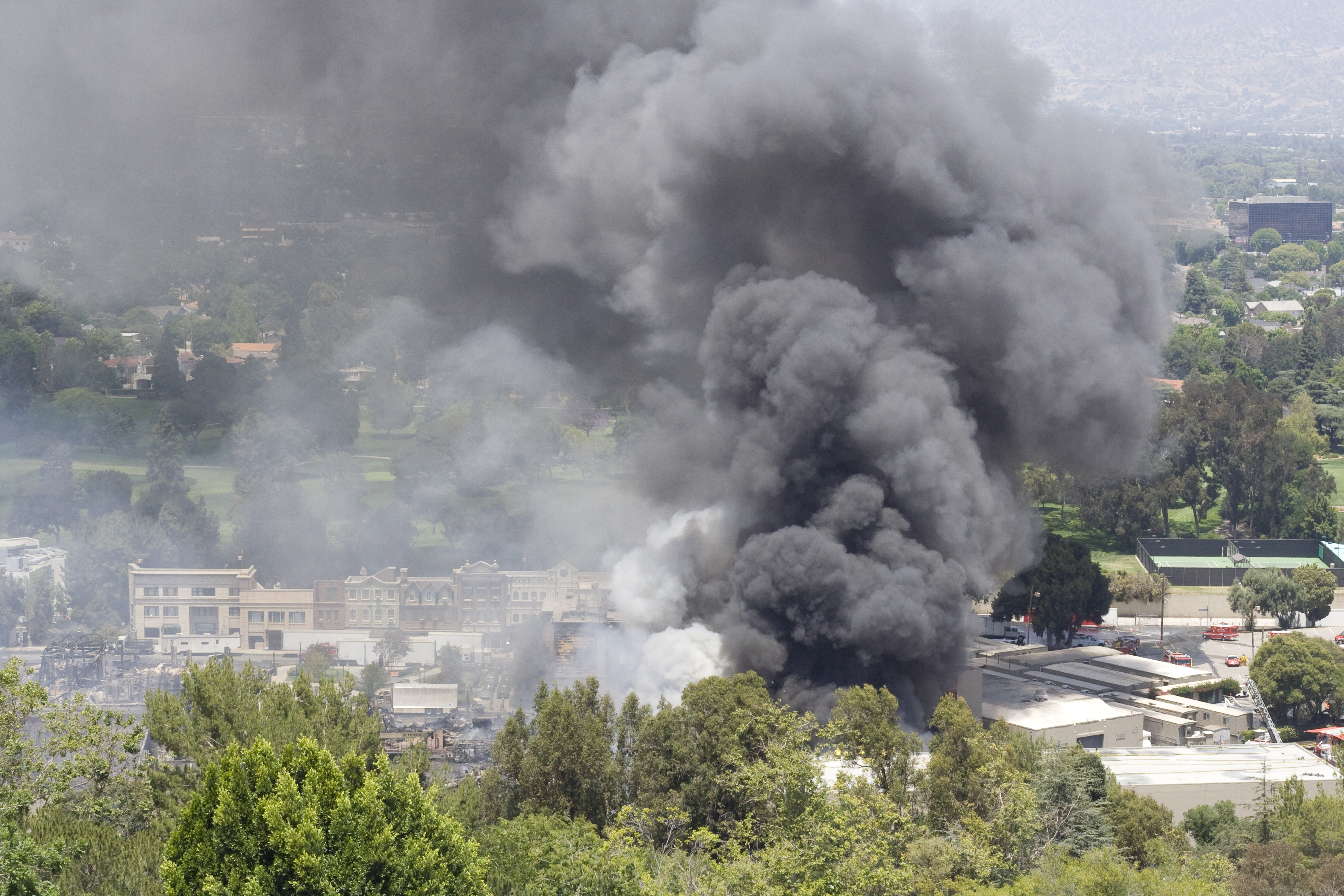If you’re new to the business, two things about lighting will probably surprise you: night exterior scenes are actually really bright, and sound stages are really dark.
In the second case, the reason is control. You don’t want light leaking onto the set from open doors or anything like that. Electricians will, of course, set up [glossary slug=”work-light”]work lights[/glossary]{{1}} in walkways and certain gathering areas, like [glossary slug=’video-village’]video village[/glossary] and [glossary slug=’craft-service’]crafty[/glossary].
These are pretty handy when you’re coming from a well-lit (often sunny) office, like me. Still, there’s a limit to how bright the work lights can be, and the moment the door swings shut behind you, you’re probably functionally blind.
Which is where the fire lane comes in.

That’s the terrifying name given to the four feet of space that’s supposed to surround every sound stage. Usually, it’s demarcated by a yellow line; nothing should be between that line and the wall. It doesn’t matter if it’s as mobile as a cart on wheels or as small as an apple box, the fire lane must be clear. If a fire marshal does a surprise inspection and catches a cluttered fire lane, he will shut you down.
The reason for this, my cinematography professor assured me, is that sound stages are DEATH TRAPS.

A sound stage is basically a large, wood box, filled with extremely hot lamps{{2}} aimed at flimsy, temporary structures. It’s a wonder these things don’t burst into flames on a regular basis.{{3}}
Set walls are highly flammable, and should they, God forbid, catch fire, the stage will fill up with smoke extremely quickly. The fire lane is your best bet to get the hell out of there with your lungs intact.
But that’s the worst-case scenario. For everyday purposes, the fire lane is a handy way to navigate around the set while your eyes are still adjusting to the dark. It’s better than walking around with one eye closed all the time to preserve your night vision.

[[1]]Not to be confused with [glossary]house lights[/glossary], which are the overhead lights built into the stage itself.[[1]]
[[2]]As the Hollywood Juicer puts it: “An incandescent bulb is really nothing but a tiny toaster — complete with glowing white-hot filament — encased in a very thin glass shell.”[[2]]
[[3]]You can thank electricians for keeping us safe.[[3]]
One Response